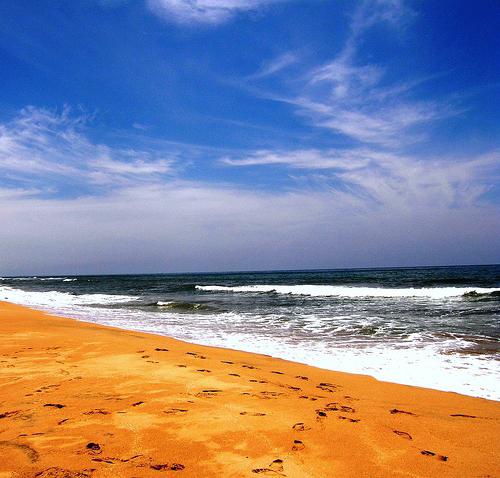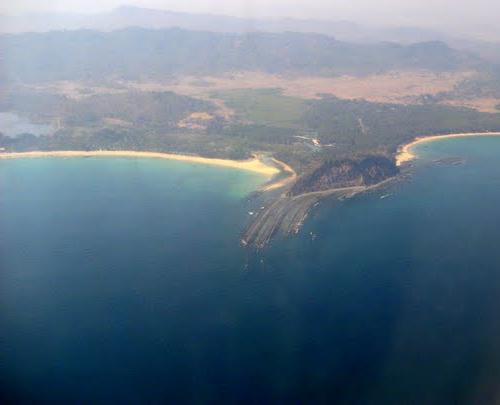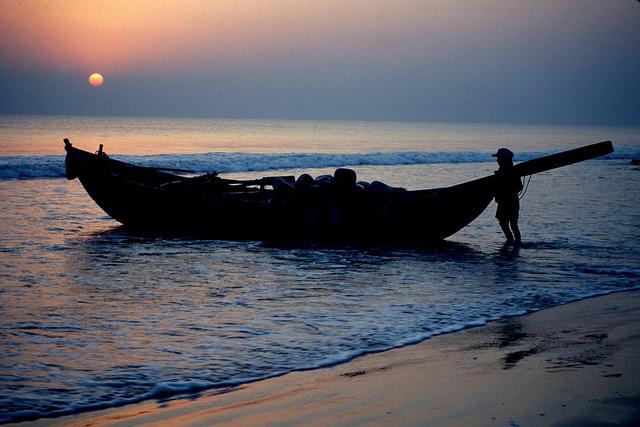In the science of geography there is a clear concept of how the bay differs from the sea. If in the first there are no significant features from the rest of the ocean, then in the seas, even open, there is its own regime of water exchange, a special fauna and flora. In this sense, the Bay of Bengal was undeservedly offended. After all, it’s not just far-reaching masses of ocean water (as, for example, in the Bay of Biscay off the coast of Spain), but a real open sea. However, in the east, the bay has its own inland sea - the Andaman Sea, fenced off from other waters by a chain of the islands of the same name.

The Bay of Bengal has been known to people since ancient times. Even before the Age of Geographical Discoveries, these water expanses were plowed by the Chinese, Indians, Persians and Malays. Since the VII century, the Arabs have been intensively exploring the water area. Using navigation aids such as the astrolabe and the compass, they advanced east from the Persian Gulf , reaching the shores of Indochina. At the beginning of the 15th century, European ships appeared in these latitudes. Northern aliens contributed to the study of the geographical and climatic features of the local seas, in particular, they discovered and described the impact on the climate in the bay of powerful trade winds, forming on both sides of the equator.
The Bay of Bengal does not have a distinct southern border. In the west, its border is Hindustan and Sri Lanka, and in the east - the Indochina peninsula. The average depth of this huge open sea is more than two and a half thousand meters, however, the depth fluctuations are very heterogeneous. In the north, thanks to the powerful rivers Brahmaputra, Ganges, Pennar, Krishna, Godovari and Mahanadi, the bottom rises. Water arteries carry many sediments and silt into the sea, which form the continental shelf. Therefore, in the northern part of the gulf, the salinity of the water is less than in the southern one - 30 ppm versus 34. If you look at the water from a height, the difference in the turbidity of the water is also noticeable.

The Bay of Bengal is located in the zone of influence of a humid equatorial climate. Monsoons form the seasons here. In the south in winter, a powerful trade winds are established, which in the north passes into the monsoon. The largest daily fluctuations in water level are recorded here - low tides sometimes lead the sea by 11 meters. In November and December, powerful tropical cyclones form over the equatorial part of the bay, which fly ashore, causing significant damage and resulting in loss of life. The lower the coast, the more damage the element does. So, in the capital of Bangladesh, Dhaka, rising only eight meters above the sea level, monsoon water floods the streets to the waist.

The description of the Indian Ocean, especially its fauna and flora, may well be attributed to the flora and fauna of the Bay of Bengal. Eternally warm waters are inhabited by coral colonies, especially reefs near the Andaman and Nicobar islands and Sri Lanka. A wide variety of fish, jellyfish, crustaceans and mollusks are found here. Stingrays (manta rays) and sharks are very common - coral, tiger, white. Some of these predators penetrate far upstream, attacking people. Among mammals, several species of dolphins, baleen whales, as well as the Indian Ocean thunderstorm, killer whales, can be mentioned.